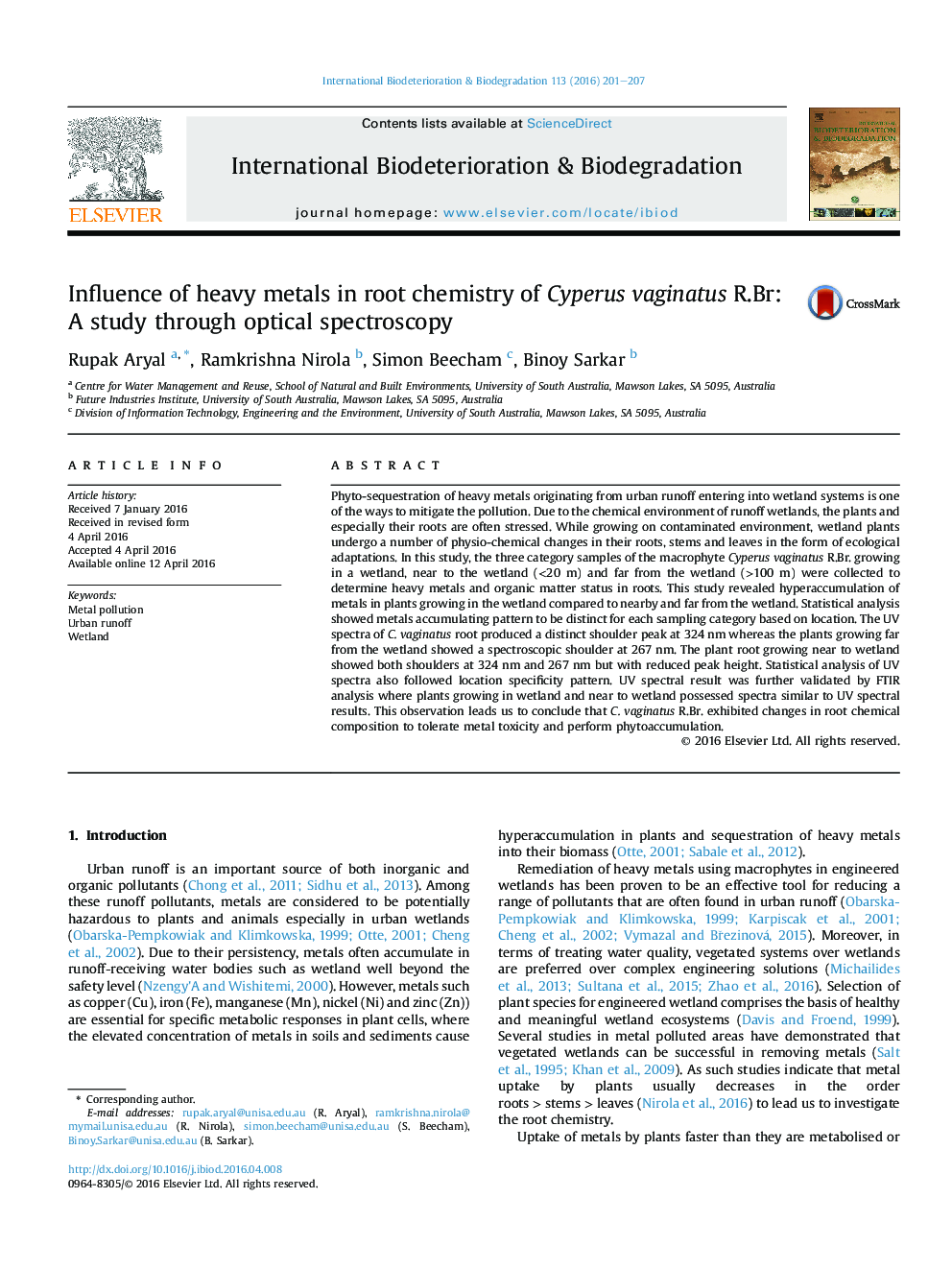| کد مقاله | کد نشریه | سال انتشار | مقاله انگلیسی | نسخه تمام متن |
|---|---|---|---|---|
| 4364088 | 1616304 | 2016 | 7 صفحه PDF | دانلود رایگان |

• Root of macrophyte Cyperus vaginatus was analyzed for heavy metals and organics.
• High metal contents observed in plants growing in the wetland than far from it.
• UV shoulder at 324 nm observed in wetland plant and 267 nm growing away from it.
• Weak and shifted to lower wavenumber in IR band showed metal complexation in wetland plant.
• Bathochromic shift of peak in wetland plant indicated roots had stress.
Phyto-sequestration of heavy metals originating from urban runoff entering into wetland systems is one of the ways to mitigate the pollution. Due to the chemical environment of runoff wetlands, the plants and especially their roots are often stressed. While growing on contaminated environment, wetland plants undergo a number of physio-chemical changes in their roots, stems and leaves in the form of ecological adaptations. In this study, the three category samples of the macrophyte Cyperus vaginatus R.Br. growing in a wetland, near to the wetland (<20 m) and far from the wetland (>100 m) were collected to determine heavy metals and organic matter status in roots. This study revealed hyperaccumulation of metals in plants growing in the wetland compared to nearby and far from the wetland. Statistical analysis showed metals accumulating pattern to be distinct for each sampling category based on location. The UV spectra of C. vaginatus root produced a distinct shoulder peak at 324 nm whereas the plants growing far from the wetland showed a spectroscopic shoulder at 267 nm. The plant root growing near to wetland showed both shoulders at 324 nm and 267 nm but with reduced peak height. Statistical analysis of UV spectra also followed location specificity pattern. UV spectral result was further validated by FTIR analysis where plants growing in wetland and near to wetland possessed spectra similar to UV spectral results. This observation leads us to conclude that C. vaginatus R.Br. exhibited changes in root chemical composition to tolerate metal toxicity and perform phytoaccumulation.
Journal: International Biodeterioration & Biodegradation - Volume 113, September 2016, Pages 201–207